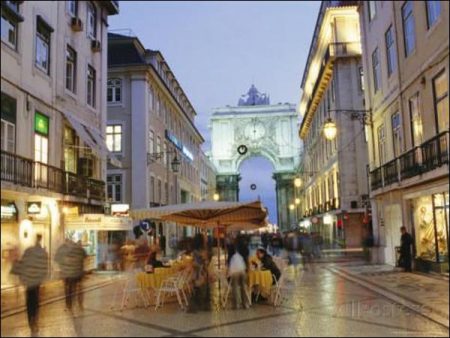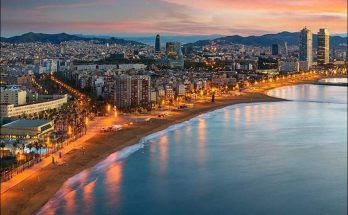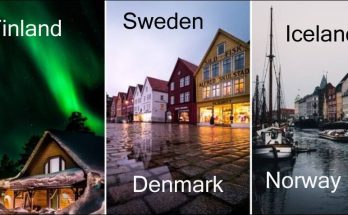Formal Name: República Portuguesa, Portuguese Republic.
Term for Nationals: Portuguese; adjectival form — Portuguese.
Official languages: Portuguese
Capital (and largest city): Lisbon (Lisboa)
Size and Location: Approximately 35,510 square miles including the Azores and Madeira. Continental Portugal occupies about one-sixth of Iberian Peninsula; bounded on north and east by Spain and on west and south by Atlantic Ocean. With an area 35,510 square miles Portugal is a small country, yet within its narrow confines there is a wide geographical diversity.
Portugal, lying between latitudes 37° North and 42° North, faces the Atlantic and the riches of North and South America, with the prosperous countries of North West Europe situated to the north and the Strait of Gibraltar, through which pass the main trade routes to the Mediterranean, the Middle East and the Far East, situated to the south. This has given Portugal a position eminently suitable for trading purposes.
Topography: Hills and mountains north of Rio Tejo; rolling plains to the south.
Climate: Varied with considerable rainfall and marked seasonal temperatures in north; dryer conditions and milder temperatures in south. The temperature and rainfall statistics for Lisbon are as follows: average temperature for January 50·5° F., for July 71° F., and the average annual rainfall 29·7 inches. The winds blow for the most part from the Atlantic or Mediterranean, but any moisture content is rapidly dispersed, for as the air reaches the scorching interior its moisture-holding capacity is raised, and the clouds, often prevalent along the west coast, disappear literally into thin air.
Religion: Ninety-five percent Roman Catholic; freedom of worship guaranteed.
Population: Estimated at 10,9 million in 2010
Ethnic Groups and Language: Marked ethnic and linguistic homogeneity; dominated by Mediterranean racial characteristics and Latin language roots.
Lisbon
Situated at a point where the inland tidal lake, the Rada da Lisboa, narrows to form the Tagus estuary, Lisbon is sheltered from western storms and cold northerly winds by the Cintra hills, a ridge of barren highland behind it. Its latitude, 38° 44′ North, and its easy access to the Atlantic have throughout its history caused Lisbon to be a major port of call for all types of ships. Before Roman times there were Celtic settlements in this area and trade with Britain and north-west France flourished. In Roman times Olisipio, as it was called, was a small seaport in the remote western province of Lusitania.
In this capacity the town continued to flourish under Visigoth and Moor, until, after the Christian reconquest of Spain, Portugal became independent and acquired capital to fit out voyages of discovery. The tower of Belem, rising dramatically above the Tagus, a little to the west of Lisbon, is the spot from which many expeditions set sail, including that of Vasco da Gama. Today Lisbon is the only major port along the west Iberian coast, forming an important passenger port, refuelling station and entrepôt port, with a river frontage of 5 miles. The main road and railway routes of Portugal converge on Lisbon.
Lisbon with its population of 2,8 million presents to the visitor a relatively modern aspect. Today the Atlantic port of Lisbon, though admittedly an international port, lacks an adequate hinterland and contributes little to world trade; in fact the main trade routes now by-pass the Portuguese coast.
Visits: 76



